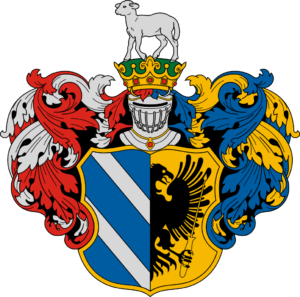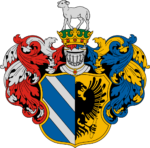Szeged

Szeged is located on the Great Hungarian Plain where the River Maros meets the “blond” River Tisza. The city was mentioned first in 1118, and it used to be an important town in the time of the Árpád Dynasty because it was storing the huge amount of salt coming from Transylvania. The trade of salt had belonged to the kings and it brought a considerable income to the Treasury. You can read about the salt trade on my page:
https://www.hungarianottomanwars.com/essays/salt-the-white-gold-of-hungary/

The first castle of Szeged was destroyed by the Mongols in 1241. Then, the inhabitants fled to the nearby swamps, but they soon returned and rebuilt their town. The castle was enlarged right after the Mongol invasion of 1241-42, during the great castle-construction project of King Béla IV that he launched all over the kingdom. In the 14th century, during the reign of King Lajos I, Szeged became the most important town of Southern Hungary, and – as the Ottoman armies got closer to Hungary – the strategic importance of Szeged grew.

The city had been safely developing in the middle of the Hungarian Kingdom and it had a thriving weekly market and industry.
It was the place where the Truce between Sultan Murad and King Ulászló I. was declared in 1444. Unfortunately, the young king was instigated by the Pope’s legate and broke his oath. He launched his disastrous campaign where he lost his life at Várna.
Soon, Szeged found itself on the fringe of the Kingdom and faced the Turkish peril. It was the time when King Zsigmond had a wall built around the town. Szeged was raised to free royal town status in 1498. Szeged was first pillaged by the Ottoman army on 28 September 1526, after the Battle of Mohács.

The bloody period of the Dual Kingdom began: the western part of the country was seized by King Habsburg Ferdinand while the eastern parts were held by King Szapolyai. The Habsburgs’ army took the town from the Hungarian King Szapolyai in 1542 which made the Turks very angry because Szapolyai was their ally. The Sultan punished the town’s people rather severely for ceding the place to Ferdinand when after the siege of 1543 he had taken over the castle.
The judge of the city had to flee but he organized the Hajdú soldiers and the city’s inhabitants to take his city back in 1552. He managed only to take the city but the castle withstood his army. However, the Hungarians had to flee before the reinforcing Ottoman army got there from Buda. The disciplined Spahies and the Janissaries won the open battle so the city got into their hands for 136 years.

The town became part of the Eyalet of Buda. This way, Szeged was placed under the Sultan’s central treasury’s command so the tax was paid directly to there. It was more advantageous than the situation of Sipahi-owned lands where the Sipahis took as much out of the settlements as they could while they were in their possessions. Sometimes the ownership changed hands annually so the new Sipahi lord cared only about his profit. It was the reason why the inhabitants of many villages moved to Szeged. After 1596, the city became part of the Eyalet of Eger castle.

The Habsburg Emperor’s troops took the city back only on 23 October 1688, after a two-week-long siege. Szeged regained the free royal town status in 1715. In 1719, Szeged received its coat of arms (still used today) from Emperor Charles III.

During the next several years, Szeged grew and prospered. Piarist monks arrived in Szeged in 1719 and opened a new grammar school in 1721. Szeged also held scientific lectures and theatrical plays. These years brought not only prosperity but also enlightenment. Between 1728 and 1744 witch trials were frequent in the town, with the “Szeged witch trials” of 1728–29 perhaps being the largest. The witch trials were instigated by the authorities, who decided on this measure to remove the problem of the public complaints about the drought and its consequences of famine and epidemics by laying the responsibility on people among them, who had fraternized with the Devil. In 1720, the ethnic Hungarian population of the town numbered about 13000 to 16000, while the number of Serb inhabitants was 1300.
Szeged is known as the home of paprika, a spice made from dried, powdered capsicum fruits. Paprika arrived in Hungary in the second half of the 16th century as an ornamental plant. About 100 years later the plant was cultivated as an herb, and paprika as we know it. Szeged is also famous for its székelygulyás, a goulash made with pork, sauerkraut, and sour cream. And also famous for their halászlé, fish soup made of carp and catfish.
The citizens of Szeged played an important part in the Hungarian Revolution of 1848-49. Kossuth Lajos delivered his famous speech here. Szeged was the last seat of the revolutionary government in July 1849. The Habsburg ruler Franz Joseph punished the leaders of the town, but later Szeged began to prosper again; the railway reached it in 1854, and the town got its free royal town status back in 1860. Mark Pick’s shop – the predecessor of today’s Pick Salami Factory – was opened in 1869.

Today the inner city of Szeged has wide avenues. This is mainly due to the great flood of 1879, which wiped away the whole town (only 265 of the 5723 houses remained and 165 people died). Emperor Franz Joseph visited the town and promised that “Szeged will be more beautiful than it used to be”. He kept his promise, and during the next years a new, modern city emerged from the ruins, with palaces and wide streets.

Dear Readers, I can only make this content available through small donations or by selling my books or T-shirts:
Please, feel free to support me with a coffee here:
You can check out my books on Amazon or Draft2Digital, they are available in hardcover, paperback, or ebook:
https://www.amazon.com/dp/198020490X or at https://books2read.com/b/boYd81

My work can also be followed and supported on Patreon: Become a Patron!http://Become a Patron!
[wpedon id=”9140″]

https://hungarianottomanwars.myspreadshop.com/all


















